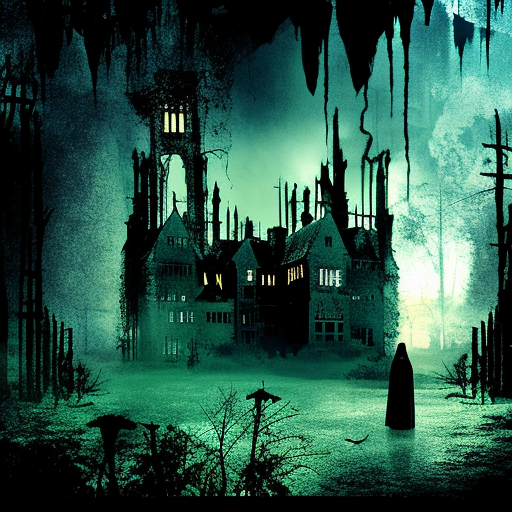The Fall of the House of Usher and Other Tales: A Collection of Gothic Horror
The Fall of the House of Usher and Other Tales is a collection of short stories by Edgar Allan Poe, showcasing his mastery of the Gothic horror genre. From haunted houses to psychological torment, these tales delve into the darkest recesses of the human mind, exploring themes of madness, death, and the supernatural. With vivid imagery and a chilling atmosphere, Poe’s stories continue to captivate readers and leave them with a sense of unease long after the final page is turned.
The Fall of the House of Usher
“The Fall of the House of Usher” is the titular story of the collection and one of Poe’s most famous works. It follows the narrator as he visits his childhood friend, Roderick Usher, in his decaying ancestral home. As the story unfolds, the reader is enveloped in an atmosphere of dread and impending doom. The crumbling mansion mirrors the deteriorating mental state of its inhabitants, and supernatural occurrences heighten the sense of horror. Poe skillfully weaves together elements of psychological terror and the macabre, leaving the reader questioning what is real and what is imagined.
The Masque of the Red Death
“The Masque of the Red Death” is a chilling allegorical tale set in a plague-ridden kingdom. Prince Prospero, seeking to escape the horrors outside, hosts a lavish masquerade ball within the confines of his abbey. However, the revelry is interrupted by the appearance of a mysterious figure dressed as the Red Death, a symbol of mortality. This story explores the inevitability of death and the futility of trying to escape it. Poe’s vivid descriptions and symbolism create a haunting atmosphere that lingers long after the story ends.
The Tell-Tale Heart
“The Tell-Tale Heart” is a psychological thriller that delves into the mind of a murderer. The unnamed narrator is plagued by the sound of his victim’s beating heart, which he believes can be heard even after the man’s death. As guilt consumes him, the narrator’s sanity unravels, leading to a shocking climax. This story explores themes of guilt, paranoia, and the power of the human conscience. Poe’s use of first-person narration intensifies the sense of unease, drawing the reader into the disturbed mind of the protagonist.
Key Takeaways:
- Poe’s stories are characterized by their atmospheric descriptions, vivid imagery, and exploration of the human psyche.
- The collection delves into themes of madness, death, and the supernatural, creating a sense of unease and terror.
- Poe’s use of symbolism and allegory adds depth and layers of meaning to his stories.
- The Fall of the House of Usher and Other Tales showcases Poe’s mastery of the Gothic horror genre and his enduring influence on literature.
“I became insane, with long intervals of horrible sanity.”
– Edgar Allan Poe
In conclusion, The Fall of the House of Usher and Other Tales is a captivating collection of Gothic horror stories that continue to enthrall readers with their atmospheric descriptions, psychological depth, and exploration of the darker aspects of human nature. Edgar Allan Poe’s mastery of the genre is evident in each tale, leaving a lasting impression on those brave enough to delve into the depths of his chilling narratives.












